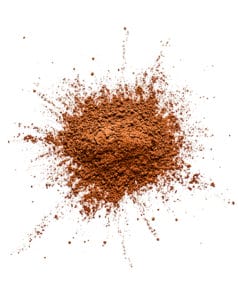Ten essential facts clear up confusion over what’s safe and unsafe on a strict gluten-free diet.

Those diagnosed with celiac disease are told to follow a strict gluten-free diet and avoid foods with the gluten-containing grains of wheat, barley and rye. From bread to pastries to pizza, it’s a life-changing diet.
The avoidance instruction itself sounds straightforward – at least while you’re still in the gastroenterologist’s office. But putting the regimen into practice is tricky. Many people with the autoimmune condition end up perplexed in the grocery aisle, or find themselves staring at a restaurant menu – trying to recall whether an ingredient is or isn’t gluten-free.
For instance, starches are a minefield, and gluten can lurk in everything from processed foods to seasonings, sauces, and even hamburger patties.
Allergic Living invited two celiac and nutrition experts – Shelley Case, registered dietitian, and Rachel Begun, registered dietitian nutritionist, to resolve common confusion about whether key food items are – or are not – gluten-free.
1. Are products with wheat starch off limits?
There are three kinds of wheat starch: unmodified, modified and specially processed. “Depending on the processing, it can contain levels of gluten ranging from less than 5 parts per million to over 10,000 parts per million,” says Case, the author of Gluten Free: The Definitive Resource Guide.
The starch is extracted from wheat flour, and then either left as is (unmodified), altered with acids and enzymes (modified) or it’s further processed to remove most of the protein (specially processed). Each type will contain gluten, with unmodified starch having the most and “specially processed” having the least.
Some wheat starch is so highly processed that it contains well below 20 parts per million of gluten, so the Food and Drug Administration allows it to be used in products that carry a “gluten-free” label, says Begun. (The FDA developed the standard of less than 20 ppm of gluten for gluten-free claims in packaged foods, which is deemed safe for celiac disease. It’s also the standard in Canada.)
So watch for such a claim. “If you see wheat starch in the ingredients but no gluten-free claim is made, the company is not ensuring there is less than 20 ppm of gluten, and that product should be avoided,” says Begun.
2. Is maltodextrin safe on the gluten-free diet?
Malted barley contains gluten and needs to be avoided. However, despite its name, maltodextrin is not made from malt. So where does that leave this ingredient that’s used in processed foods as an anti-caking agent, a thickener or as a binding agent to carry flavor?
Case explains that maltodextrin is a highly processed and purified starch that can be derived from corn, potatoes, rice or wheat. “Even if it appears in the ingredient list as ‘wheat maltodextrin’ or ‘maltodextrin (wheat),’ it is acceptable for people with celiac disease because it is so highly processed and purified,” says Case.
3. Does the same go for plain dextrin?
Like maltodextrin, dextrin is a starch. It can be used as a stabilizer or thickener in medications and, less frequently, in processed foods. Dextrin can be derived from corn, sorghum, potato, arrowroot, rice, tapioca or wheat. Unlike maltodextrin, however, dextrin is only partially processed.
So when wheat has been used, gluten protein often remains in an amount that’s not safe for those with celiac disease.
Any package label with the terms “wheat dextrin,” or “dextrin (wheat),” or “wheat” shown in a “contains” list on the label will make a product off-limits.
4. Meat is gluten-free though, right?
As wheat is considered a top allergen, the FDA requires that it be declared on labels, Case notes. In Canada, wheat and all gluten sources have to be declared.
However, the U.S. Department of Agriculture (USDA), which regulates foods with over 3 percent raw meat and certain egg products, does not require that wheat, barley or starch ingredients with those components be declared on ingredient lists. So ask your butcher about meats such as sausages and hamburger patties. They can have gluten-containing ingredients.
While about 80 percent of food manufacturers regulated by the USDA voluntarily list major allergens like wheat on their packaging, Case warns that not all do. With such a product, contact the company to clarify.
5. Is there gluten in spices and seasonings?
Single-ingredient spices are typically fine, Begun says. But “spice and seasoning blends have multiple ingredients, and potentially can contain gluten.

Case finds seasoning blends may have an unsafe ingredient that’s being used as a carrier agent to hold the mixture together. Lactose or dextrose are safe, she says. But wheat flour, hydrolyzed wheat protein, bread crumbs and malted barley flour are certainly not safe. Also, if wheat starch is shown, you won’t know if it has been adequately processed, so avoid it.
Always check for these ingredients, says Case. Unfortunately, the FDA does not require barley to be declared, which complicates life. (In Canada, regulations require gluten labeling, including barley.)
6. Can I have some vinegar on that?
There are plenty of vinegars that are safe for those with celiac disease, including favorites like balsamic (made from grapes), pure rice wine, apple cider, distilled white and red or white wine vinegars.
“Always opt for distilled vinegars, which means if there is a gluten-containing grain being used, the protein will have been removed in the distillation process,” Begun explains. “Blended and seasoned vinegars are common,” she says, so be sure to read ingredients statements to make sure no gluten has been added.
Malt vinegar, as its name implies, is made from barley malt. “It is definitely not allowed on the gluten-free diet,” Case says. Even as a vinegar, it is fermented and not distilled, so it still contains residual gluten.
You’ll see the malt turn up, sometimes surprisingly, in other foods. Barley malt extract and barley malt syrup are essentially the same, and are used interchangeably for their flavor and color, as well as their ability to add crunch to foods like cereals, cookies and crackers, Case says. So again, be mindful of ingredients.
7. Is it true that sourdough is allowed?
This one’s easy: it is not. The confusion arises because there has been much online misinformation about sourdough’s gluten status. “Despite what you may have read, sourdough breads made with gluten-containing grains are not safe for people with celiac disease or gluten sensitivity,” says Begun, who works as a nutrition advocate and consultant.
Sourdough is typically made from wheat, barley or rye, which contain gluten. A starter culture is added that causes a fermentation process in the dough, and while the fermentation breaks down some of the gluten protein, this in no way brings the levels down to the standard that’s safe for celiac disease, says Case.
Fortunately, there are “sourdough breads made with gluten-free grains and labeled gluten-free,” Begun says.
8. Is all gluten-free beer safe?
For those who enjoy a cool pint, there are a growing number of gluten-free beers on the market. A small number of micro-breweries now even offer safe craft beer, and the taste of gluten-free beer has vastly improved from manufacturers’ early efforts.

Truly gluten-free beers are brewed from grains that include rice, sorghum, millet, quinoa or buckwheat (which, despite its name, is gluten-free).
However, there are also gluten-removed beers that are derived from gluten sources such as wheat, rye or barley and then a process is employed to remove the gluten. These are often marketed to gluten-free consumers.
However, Begun recommends that those who are medically required to follow a gluten-free diet avoid these “gluten-removed” choices. Gluten testing of fermented products gets quite complicated. “The safety of gluten-removed beers is not guaranteed,” she says. “People with celiac disease and gluten sensitivity need to avoid gluten-removed beers and stick with those made from gluten-free grains.”
9. What about spelt? Is it gluten-free?
Another myth that continues to circulate is that spelt is safe for those with celiac disease or gluten sensitivity. Some processed foods made with spelt flour even get labeled as “wheat-free,” which is inaccurate and can lead to confusion among those who cannot eat gluten for medical reasons.
Here are the facts: spelt is an ancient wheat, dating back thousands of years. Like all types of ancient wheat, including kamut, einkorn and emmer, spelt contains high levels of gluten. As Case says simply, “spelt is not allowed.”
10. Are “flavors” and “smoke flavoring” OK?
This is a complicated category, since any of a number of substances can be used to create a flavoring, including natural sources such as vegetables, meats, fish, eggs, dairy products and spices, as well as artificial sources.
If a label says “natural flavors” or lists specific artificial flavors but the exact contents are unclear, Begun says to check if the product makes a gluten-free claim. “If there isn’t a gluten-free claim made, err on the side of caution and avoid the product.”
When it comes to smoke flavoring, Case finds things can get murky. This ingredient can be found in a variety of products, including processed meats, sauces and seasoning blends, and the flavoring can come in liquid or powder form. Concern typically arises with the powdered version, which could contain malted barley flour as a carrier agent.
With FDA-regulated food, smoke flavoring can be listed simply as “smoke flavoring” or “artificial smoke flavoring” or “artificial flavoring,” so the ingredient “malted barley flour” may or may not be declared on the label.
The better news: if smoke flavoring contains malted barley flour, it must be listed on foods regulated by the USDA. In Canada, barley must be declared on all foods.
Through her research, Case has found that “manufacturers frequently get calls from consumers wanting to know if products contain a gluten source, so they are voluntarily declaring the barley.” But if a label is unclear or there is any doubt, contact the company or leave it out.
Related Reading:
Why Gluten-Free Supplements Can’t Treat Celiac Disease
Gluten Found in Probiotic Supplements
Finland is Celiac World HQ, and the Eating is Easy





